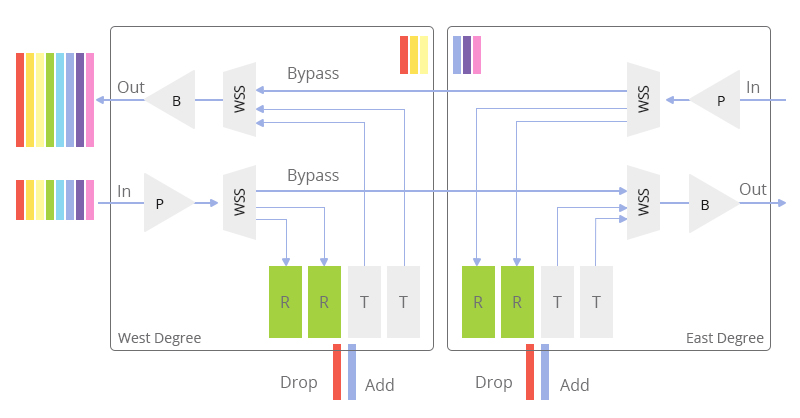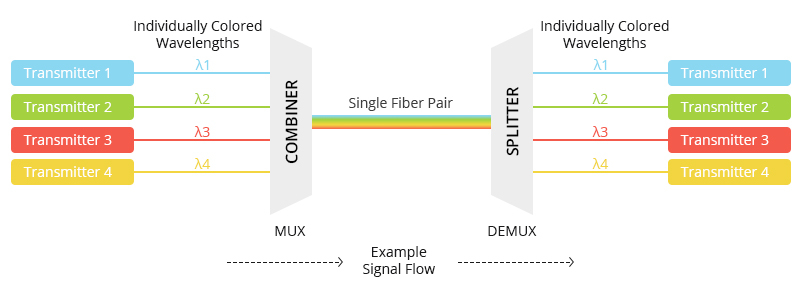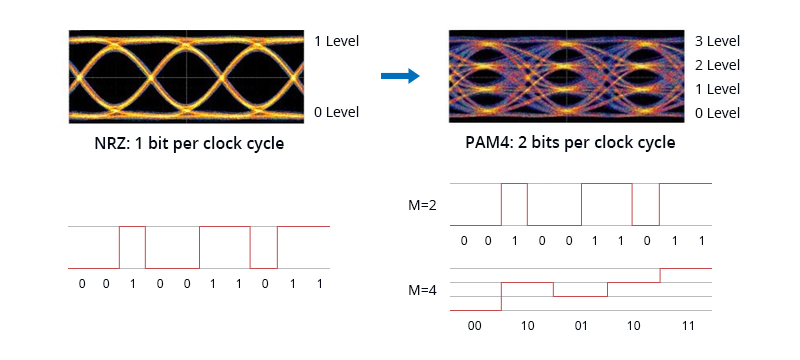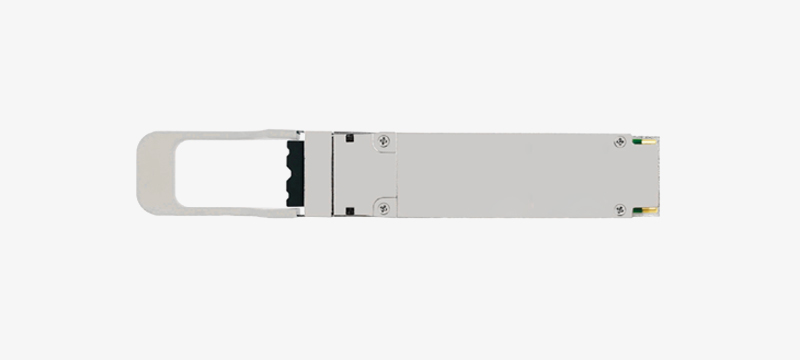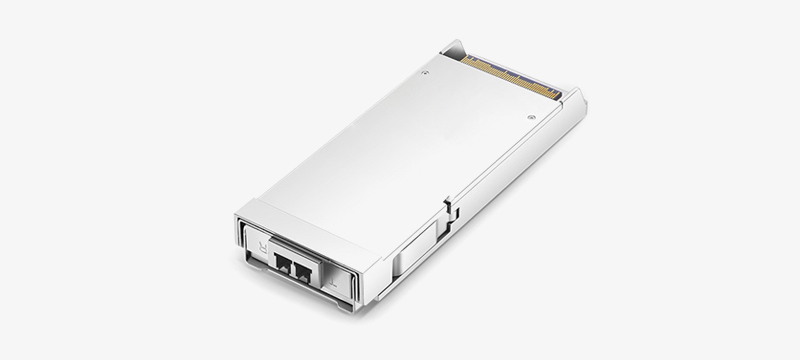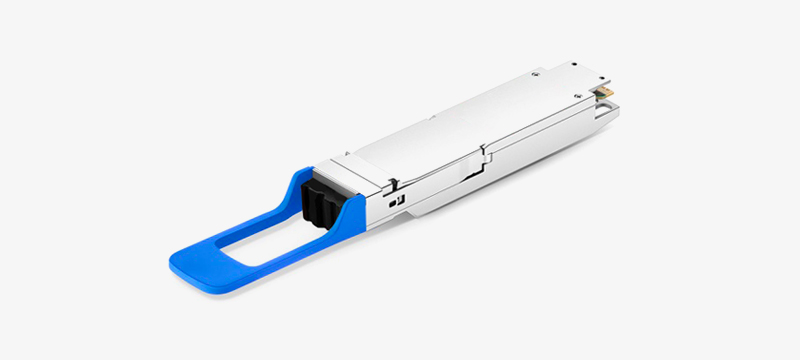Data centers, enterprises, and high-performance computing environments require flexible and well-defined 50G, 100G, 200G, and 400G direct attach cables for interconnection within a rack or between adjacent racks. With the development of 400G technology, 400G direct attach cables for short-distance DCI (Data Center Interconnect) have been mass-produced and put into market, which includes 400G DAC and 400G AOC.
Main Types of 400G DAC & AOC in the Market
Either 400G DAC or 400G AOC comes with two main form factors: QSFP-DD and OSFP, both of which can carry 8x50Gb/s PAM4 electrical lanes. Besides, there are also 400G breakout DAC/AOCs, with one 400G connector at one end, and several same connectors whose total rate is 400G at the other end. The table below shows the main types of 400G DAC /AOC and the 400G breakout DAC/AOCs in the market.
| Catagory | Name | Product Description | Reach | Application |
|---|---|---|---|---|
| 400G QSFP-DD DAC | QSFP-DD to QSFP-DD DAC | with each 400G QSFP-DD using 8x 50G PAM4 electrical lanes | no more than 3m | 400G network direct connection |
| 400G QSFP-DD Breakout DAC | QSFP-DD to 2x 200G QSFP56 DAC | with each 200G QSFP56 using 4x 50G PAM4 electrical lanes | no more than 3m | 400G to 200G network connection |
| QSFP-DD to 4x 100G QSFPs DAC | with each 100G QSFPs using 2x 50G PAM4 electrical lanes | no more than 3m | 400G to 100G network connection | |
| QSFP-DD to 8x 50G SFP56 DAC | with each 50G SFP56 using 1x 50G PAM4 electrical lane | no more than 3m | 400G to 50G network connection | |
| 400G QSFP-DD AOC | QSFP-DD to QSFP-DD AOC | with each 400G QSFP-DD using 8x 50G PAM4 electrical lanes | 70m (OM3) or 100m (OM4) | 400G network direct connection |
| 400G QSFP-DD Breakout AOC | QSFP-DD to 2x 200G QSFP56 AOC | with each 200G QSFP56 using 4X 50G PAM4 electrical lane | 70m (OM3) or 100m (OM4) | 400G to 200G network connection |
| QSFP-DD to 8x 50G SFP56 AOC | with each 50G SFP56 using 1x 50G PAM4 electrical lane | 70m (OM3) or 100m (OM4) | 400G to 50G network connection | |
| 400G OSFP DAC | OSFP to OSFP DAC | with each 400G OSFP using 8x 50G PAM4 electrical lanes | no more than 3m | 400G network direct connection |
| 400G OSFP Breakout DAC | OSFP to 2x 200G QSFP56 DAC | with each 200G QSFP56 using 4x 50G PAM4 electrical lanes | no more than 3m | 400G to 200G network connection |
| OSFP to 4x100G QSFPs DAC | with each 100G QSFPs using 2x 50G PAM4 electrical lanes | no more than 3m | 400G to 100G network connection | |
| OSFP to 8x 50G SFP56 DAC | with each 50G SFP56 using 1x 50G PAM4 electrical lane | no more than 3m | 400G to 50G network connection | |
| 400G OSFP AOC | OSFP to OSFP AOC | with each 400G OSFP using 8x 50G PAM4 electrical lanes | 70m (OM3) or 100m (OM4) | 400G network direct connection |
Differences Between 400G DAC and 400G AOC
According to the table, we know that the main differences between 400G DAC and 400G AOC are transmission distance and the available types on the market. At present, 400G DAC can provide more breakout cables and better satisfy your different connection requirements. Apart from that, 400G DAC and AOC differ from each other in the following aspects.
- Weight and volume – With fiber optic cable as transmission media, 400G AOC has about half the volume and only a quarter the weight of 400G copper DAC. Also, its cable bending radius is smaller than 400G DAC.
- Interference-resistance – Since 400G AOC with fiber optic cable doesn’t conduct electrical currents, it is resistant to interference from electromagnetic, lightning, or radio signals during data transmission. While 400G DAC with copper cable is vulnerable to power lines, lightning, and signal-scrambling.
- Price – On today’s 400GbE cable market, the price of the 400G AOC is often higher than that of 400G DAC, of course, with the same level. If both of them can meet your needs, you can choose a 400G DAC to save costs.
Further Consideration about 400G DAC and 400G AOC
Both 400G DAC and AOC are cost-effective solutions for short-distance transmission. When it comes to the transmission over 100m, 400G optical transceivers combined with the matched fiber optic cables are a suitable solution. In today’s market, 400G QSFP-DD/OSFP transceivers are continuously being pushed to the market and gradually realize mass production. So, what are 400G QSFP-DD/OSFP transceiver types and what fiber optic cables could be used with these 400G optical modules? Continue reading to find the answers in the two articles: 400G OSFP Transceiver Types Overview; 400G QSFP-DD Transceiver Types Overview.
FAQ about 400G DAC/AOC
Q: Why does 400G DAC/AOC adopt PAM4 modulation?
A: PAM4 is a more efficient modulation technology that can effectively improve the bandwidth utilization efficiency. With same Baud rate, PAM4 signal can transmit twice faster than the traditional NRZ signal. Also, the transmission costs are greatly reduced.
Q: What’s the key technology of 400G DAC/AOC?
A: The core technologies of 400G DAC/AOC are PAM4 and DSP. Since PAM4 is more sensitive to noise than NRZ especially in 400G AOC, DSP is introduced to make up for the disadvantage of PAM4. As a high-speed digital processing chip, DSP not only owns the function of recovering signal provided by the traditional CDR but also can make dispersion compensation and remove noise, nonlinear disturbance as well as other interferences.

https://community.fs.com/blog/400g-direct-attach-cables-dac-and-aoc-overview.html
Related Articles
https://community.fs.com/blog/400g-transceiver-dac-or-aoc-how-to-choose.html
https://community.fs.com/news/fs-400g-cabling-solutions-dac-aoc-and-fiber-cabling.html

